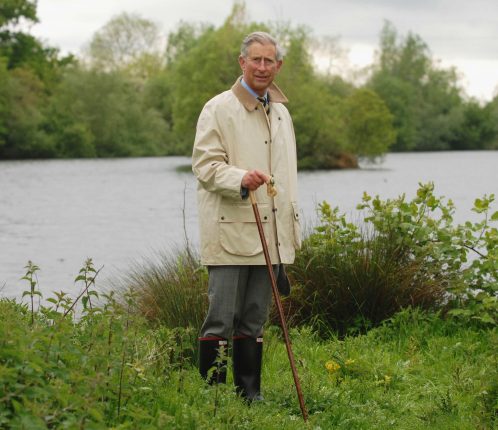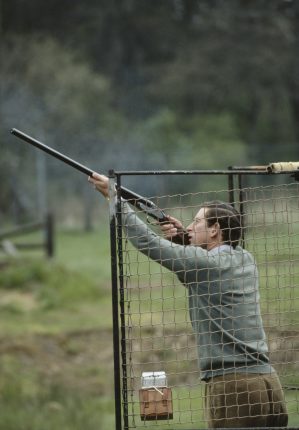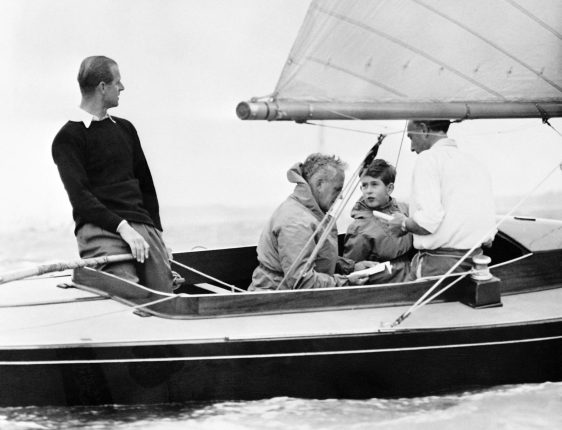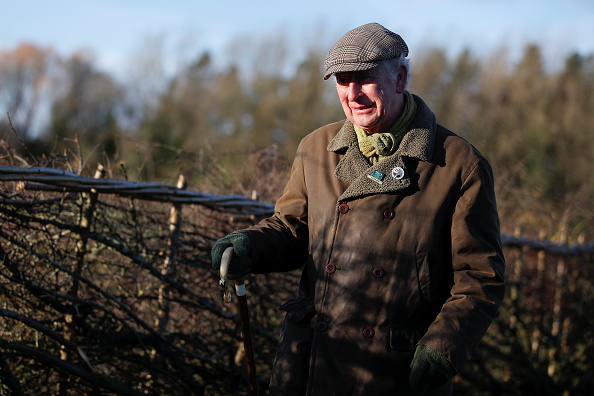The Field celebrates HM King Charles III's life that has been steeped in country sports and nature – as well as service
One can only imagine how sobering it must be to be born an heir to the throne. From the moment of arrival into the world, an entire kingdom is only a heartbeat away. Our King, Charles Philip Arthur George, has borne such expectation since 9.14pm on 14 November 1948, becoming the longest-serving heir apparent in British history. In that time he has been exposed to immense privilege and intense scrutiny in both his public and private life. No wonder, then, that the countryside and all it offers has been a place of sanctuary and fulfilment, just as it proved to be for his predecessors.
HM KING CHARLES III AND HIS SPORTING PASSIONS

Campaigning for and championing the natural world is something HM The King has always been passionate about and renowned for, earning him accolades such as ‘The Countryside’s Favourite Hero’ from Field readers. Commentators who ridiculed him for talking to plants missed the subtleties of a deeper affinity with nature and an awareness of the importance of listening to what the countryside needs. As The Field archives attest, he has led by example, too.
In 1982 The King introduced a long-term management plan to encourage wildlife and preserve the habitats of rare species on his 130,000-acre Duchy of Cornwall estate, which prompted a rise in landowners and farmers implementing similar schemes. His influence was wide-ranging, especially through his roles as president or patron. As the president at the Royal Forestry’s centenary conference on forestry and conservation in 1982, he gave an address during which he stressed how he wished to stay on good terms with the patron of the Royal Society of Nature Conservation, the patron of the British Deer Society and the patron of Men of the Trees, all of these being him at the time.
The King is still patron to societies as diverse as the Australian Stockman’s Hall of Fame & Outback Heritage Centre, the British Horse Loggers and the Border Stick Dressers Association. Whether he tells them that he is a Field reader is uncertain, but that’s what he did at a Salmon & Trout Association dinner in 1969, revealing that he followed articles on fieldsports such as shooting and fishing with interest. The King told the fishing correspondent at the time, Captain TB Thomas, that he had fished on the renowned Laxford that season. He was surprised to hear that a couple of other guests had fished that water: “It’s like getting into Heaven.” Apparently, Captain Thomas was more interested in discussing what a year it had been for Wales with the investiture and winning the Triple Crown. The King congratulated him on his Welsh accent and asked how he managed it. “I was born there,” Thomas replied.

The Prince of Wales enjoys fishing on the River Dee at Balmoral accompanied by his labrador, Harvey. (Photo by Anwar Hussein/WireImage)
Others might view His Majesty’s variety of locations for fishing as enough of a heavenly experience, since he developed his casting technique on Highlands burn trout and Deeside salmon, and has challenged himself with dry flies on the chalkstreams of the Test. No doubt the skill and discipline required had much to do with his enthralment in this pastime. However, as anyone who fishes knows, the chance to escape what is on one’s mind, whether it is the worries of your cottage or a kingdom, is part of the appeal. The community is a trusted one, too. While many locals knew where the Royal fished, they never told.
Just as with fishing and the requirement to know the quarry, its way of life and its surroundings while reacting constantly to changes in the environment and weather, The King adopted the same approach for stalking and shooting. Some of his first publicly recognised outings as a gun were on coot shoots on the Broads (as an 11-year-old boy he had accompanied Prince Philip on one after which, staying in a pub for the night, he was reprimanded by the landlady for being involved in a pillow fight). His education in shooting was developed with an emphasis on an aspect that the previous king, George VI, was so passionate about: fieldcraft. Whether the quarry was a zipping pheasant, a high pigeon or an early-morning duck, each was to be appropriately considered.

The King’s prowess enabled him to perform as a gun at field trials at Harewood Forest. An account suggests: “There can be few more daunting occasions for any shooter. In addition to performing in front of a gallery, he must watch the dog, position himself correctly as it hunts, never cease ‘feeling the wind’ and miss as seldom as possible (the look of reproach from a hard-working but unrewarded English springer will not be modified for the heir to any throne).” To everyone’s relief, he was reported to have fulfilled his role expertly.
A LIFE IN THE SADDLE
Horses have been an integral part of HM The King’s life from an early age, too. One of his first, an Irish pony called William, was written about in a letter to The Field detailing its previous owner. The correspondent explains that the pony ‘was bought at a horse fair in a lot of 10 ponies, but was so small as to be unnoticed until the horse box arrived home, when it was found there were 11 ponies’.

Progressing from this diminutive steed and encouraged by both his father and his uncle, Lord Mountbatten, The King quickly took a shine to polo. More than proficient, he made his first public appearance as a player in Jamaica at the age of 17. He gained respect and fame playing for Les Diables Bleus and the Maple Leafs as well as for national sides. When the Dundee and Perth Polo Club invited him to play at Scone Palace in 1983 they gave him a choice of playing for England or Scotland. Holding the title of Duke of Rothesay, Earl of Carrick and Baron of Renfrew, Lord of the Isles and Great Steward of Scotland, he was deemed sufficiently qualified to play for the Scots.
Polo wasn’t the only entertainment on horseback that he sought. Hunting was a passion, perhaps ignited by stories related to him of his grandfather and great-grandfather’s escapades with the Quorn. His sister, HRH The Princess Royal, fuelled further interest as she was a keen follower of the Beaufort and showed her brother the ropes out in the field. He “enjoyed” days with other packs although broke a rib out with the Wynnstay and a fractured shoulder blade on a day with the Meynell.
The King was also involved in team chasing and even turned his hand to National Hunt racing, making his amateur debut in 1980 at Plumpton in a charity race in which he came second. He then entered his first steeplechase at Sandown Park, finishing fourth before another second, this time at Ludlow on his own horse Allibar, which he was elated by. His Majesty was quoted afterwards as saying, “I thought, for God’s sake, I’m going fast enough as it is, I can’t go any faster.” This was the pinnacle before a series of unfortunate events, precipitated by the distressing experience of Allibar collapsing and dying while he was riding out on him. At the next race, at Sandown, he fell from Good Prospect before doing so again at Cheltenham four days later. His last race, in 1981, ended in ninth position on The Queen Mother’s horse. One can imagine her taking him aside afterwards and politely suggesting, “That will do, dear.”

When it came to sailing, The King was quite the natural. One story from the archives regales how he attended a cocktail party on board Britannia one Cowes Week and reportedly engaged in lively conversation about the sport with all of the guests who boat designer Uffa Fox introduced him to. It then mentioned he was only eight at the time. He became a fairly regular visitor to Cowes and sailed with his father. In 1967, he helmed the Flying Fifteen ‘Labrador’ against Prince Philip (competing in the same race) and beat him.
THE CORONATION
And so to his Coronation. The King witnessed two events that offered some insight into what the occasion held in terms of emotion, but so unique in their own way that no useful comparison can really be drawn. The first was The Queen’s coronation in 1953, when he was a mere four years old. While it must have been an unforgettable sight, the significance of such a spectacle is unlikely to have been fully comprehended by a child of that age.

He then experienced a more personal version with his investiture as Prince of Wales in 1969, the elements of which are similar to those that underpin a coronation. More than 4,000 watched the ceremony from within the walls of Caernarfon Castle, with another 250,000 onlookers filling the streets and an unprecedented 500 million watching at home on television worldwide. On that occasion he delivered his reply to the Loyal Address in Welsh, having learnt the language with the aid of gramophone records before a term at the University of Aberystwyth.
BRITISH TRADITION
As the Prince of Wales’ procession filed out of Caernarfon Castle, a German turned to a Field reporter at the time to suggest, “Surely you should leave this sort of thing to Hollywood? You can’t really believe in it any more?” The writer’s reply stands the test of time: “We accept ceremonial as part of the British tradition, each receiving from it what he needs. In any case, Hollywood could never do this kind of show half as well.” And so it was proven on Coronation Day.
Our King must participate in ceremonies and wear uniforms for they represent part of our national pride. Yet in his time as ruler he will have to interpret the ideal of monarchy suitable for present times. While it was accepted that the late Queen might be old-fashioned in her manner, HM The King must navigate this new era in a way never expected of a previous monarch in a time when fewer people than ever subscribe to the idea of patriotism, religion and social order.

HM The King’s motto, ‘Ich dien’, means I serve. The motto is strikingly similar to the Welsh ‘Eich dyn’ (Your man). This he is now more than ever before. But he has been his own man, too. He has spent the past seven decades not just serving but observing and conserving. No one could accuse him of twiddling his thumbs; he has made the best of it by filling his hands with reins, rods, rudders and rifles. Such a quality in a new monarch is one the rural nation will rejoice in. In a heartbeat.




